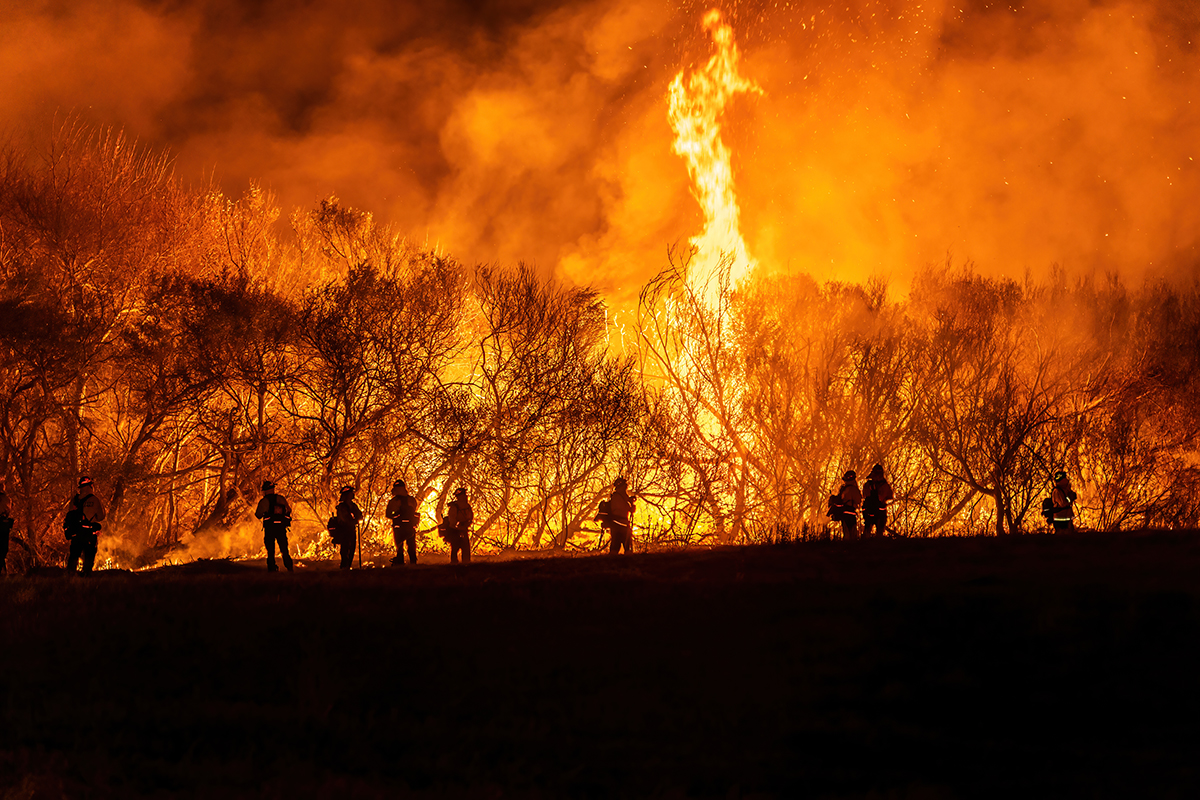The Firefighters’ Companion
Brallan Perez Favela uses his trio of Tamron lenses to document the blaze-busters of Ventura County.
Share the article:
More Photo Tips | Video Gallery | Photo Gallery | Enewsletter sign-up
By Jenn Gidman
Images by Brallan Perez Favela
In 2019, Brallan Perez Favela’s wife bought him a drone—a purchase that jump-started an entire new vocation for the California resident behind the camera. “Because of that drone, I started browsing on social media and following the pages of various people who featured images I thought were cool,” he says. “I asked one of them what kind of camera they were using, and before I knew it, I’d bought a camera of my own.”
These days, Brallan takes nature and landscape photos, dabbles in astrophotography, and serves as a volunteer staff photographer for the Ventura County Fire Department, showing up at the fire station and scenes of local blazes to document the difficult daily tasks the firefighters face. To assist him in his various photographic endeavors, Brallan uses a trio of Tamron lenses: the 17-28mm F/2.8 Di III RXD wide-angle zoom, the 28-75mm F/2.8 Di III VXD G2 standard zoom, and the 35-150mm F/2-2.8 Di III VXD standard zoom.
“I started off with the 28-75, because I wanted a wide-angle lens for my landscape photos, and I was blown away with how sharp it was,” Brallan says. “I can go from shooting landscapes to getting up close for a portrait, so it’s become my all-around lens. I ordered the 17-28 after that to give myself an even wider view, and I recently got my hands on the 35-150, which offers me an even greater focal-length range. I’m just getting started using that lens. All three Tamron lenses allow me to achieve beautiful images, and to shoot as wide open as possible, which is crucial for all the evening and nighttime photography I do.”
Brallan nabbed his firefighting photography gig in 2020 after seeing a Ventura County Fire Department social media post. “I don’t remember exactly how it happened, but they either gave somebody photo credit or mentioned their volunteer photographers,” Brallan recalls. “At any rate, that spurred me to get added onto the waiting list, and a spot finally opened up soon after the pandemic started. I love the work I do for the department.”
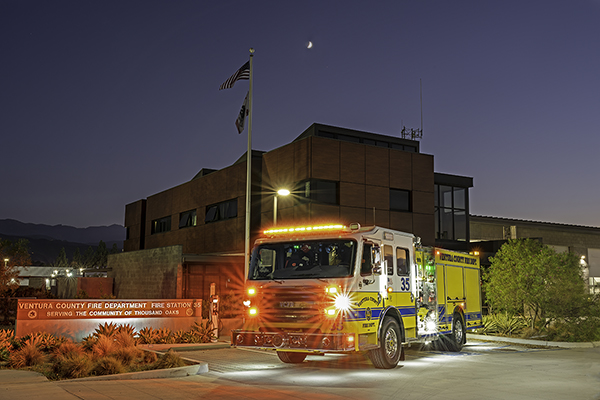
35-150mm (35mm), F/16, 15 sec., ISO 50
Click image to view larger
There are certain guidelines that Brallan has to follow when he finds out there’s a fire to photograph. “First I have to check in with a public information officer and let them know I’m en route to an incident,” he says. “I have to make sure I’m wearing my county fire department badge, and of course I don’t interfere with any of the firefighters while they’re working. One other thing I’ve learned the hard way: Always park far enough away from the scene so that you’re able to easily leave. One time, when I was still new to this, I arrived at a scene early and parked right up front, close to the action. Then all the firetrucks got there and laid out all their hoses. I was essentially trapped until they were done.”
Communication is also key. “These folks are there to do their jobs right,” Brallan says. “And there are often lives on the line, so sensitivity to that is a must. Before I start photographing, I find out what the pictures I’m taking will be used for. They could be used for training purposes, news media, or for social media posts, for example. That means that sometimes I have to take pictures without giving away too much information.”
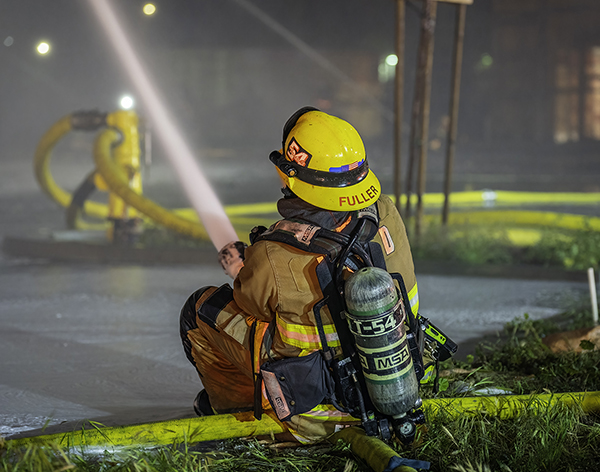
35-150mm (91mm), F/2.8, 1/40 sec., ISO 1600
Click image to view larger
Thanks to the versatility of his Tamron lenses, Brallan is able to get right up into the action or shoot from a safe distance. “Sometimes I’m only about 15 feet away from the fire,” he says. “I can feel the heat, and I go home smelling like smoke. Other times, like with this shot of the firefighters silhouetted against a vegetation fire, I shoot from further back. This was one of the first vegetation fires I responded to. I wasn’t sure how close I could get; now, knowing what I know, I’d probably creep up a little closer. But the distance afforded me this stunning perspective. They ended up using this photo as their banner pic on social media.”
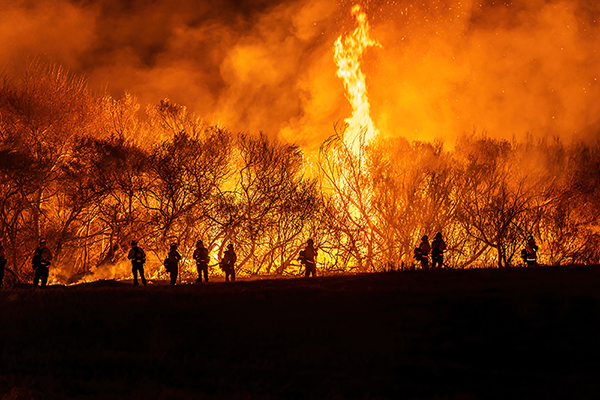
28-75mm (75mm), F/2.8, 1/100 sec., ISO 800
Click image to view larger
Having a wide-angle lens like the 17-28mm allows Brallan to photograph the action up close. “In one of the photos you see here, I’m actually up on the firetruck with the firefighter,” he says. “This was at a structure fire in the city of Camarillo. The flames could be seen from miles away. It was pretty intense to be able to shoot the scene right next to the firefighter. There were plenty of photographers across the way, and people on their phones taking pictures, but with that lens and the access I have, I have the ability to capture photos like this.”
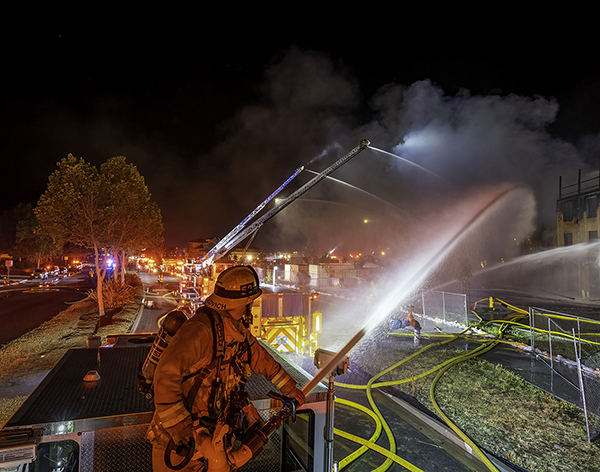
17-28mm (17mm), F/3.5, 1/30 sec., ISO 1600
Click image to view larger
Away From the Flames
When he’s not photographing local fires, Brallan uses his Tamron lenses to take pictures of nature and landscape scenes, with his own artistic twist. “I want to show my perspective on the known photography sites that have been shot a million times,” he says. “Not that there’s anything wrong with taking those bucket list shots, either. The Manhattan Beach Pier, for instance, is one of those places that photographers flock to, because it’s such a cool, symmetrical type of image. Plus, twice a year, photographers show up in droves for ‘Pierhenge,’ when the sun sets exactly in the center of the pilings of the pier if you’re on the beach below.”

28-75mm (75mm), F/22, 0.6 sec., ISO 50
In the evening and at night is when Brallan’s photography really comes alive, whether he’s taking pictures of cactuses at sunset in Joshua Tree National Park or photographing the Milky Way from Death Valley. “And images like the former often come about unintentionally when I’m trying to shoot more intentional photos of the latter,” he says. “I was hoping the cactuses in the image you see here would serve as a foreground element for when the Milky Way emerged later that night. But there was too much cloud cover, and the Milky Way didn’t happen. However, because of the clouds, the sky got colorful real fast at sunset. It wasn’t the image I came for, but I didn’t leave empty-handed. Which is good, because I traveled four hours to this spot to take pictures.”

28-75mm (40mm), F/14, 1.0 sec., ISO 125
Click image to view larger

17-28mm (28mm), F/2.8, 241.0 sec., ISO 640
Click image to view larger
Sometimes finding the unique perspective that Brallan is seeking is simply a matter of being in the right place at the right time. “One of the most scenic roads in California is the Grimes Canyon overlook, a well-known spot where photographers head to practice their long-exposure light-trails photography,” he says. “I like doing long-exposure night shots there like everyone else, and on this particular night I knew there was going to be a rocket launch. The challenge with taking pictures of the rockets is that you know the window of when the launch will be, and somewhat of an idea of where the rocket will initially appear, but when the rocket goes up and over the ocean, you don’t really know for sure where it’s going to go.”

17-28mm (18mm), F/7.1, 93 sec., ISO 250
Click image to view larger
On this particular night, however, Brallan was able to catch the glow of the rocket’s trajectory side-by-side with the glow of the traffic below. “I believe I’m the first person to ever capture the rocket launch in a long exposure from that vantage point. I was reluctant at first to even share it—it was such a special shot, and now I’m afraid everyone’s going to be rushing out there to try to take that same photo!”
More Photo Tips | Watch Videos | Learn More About Tamron Lenses | Photo Gallery
